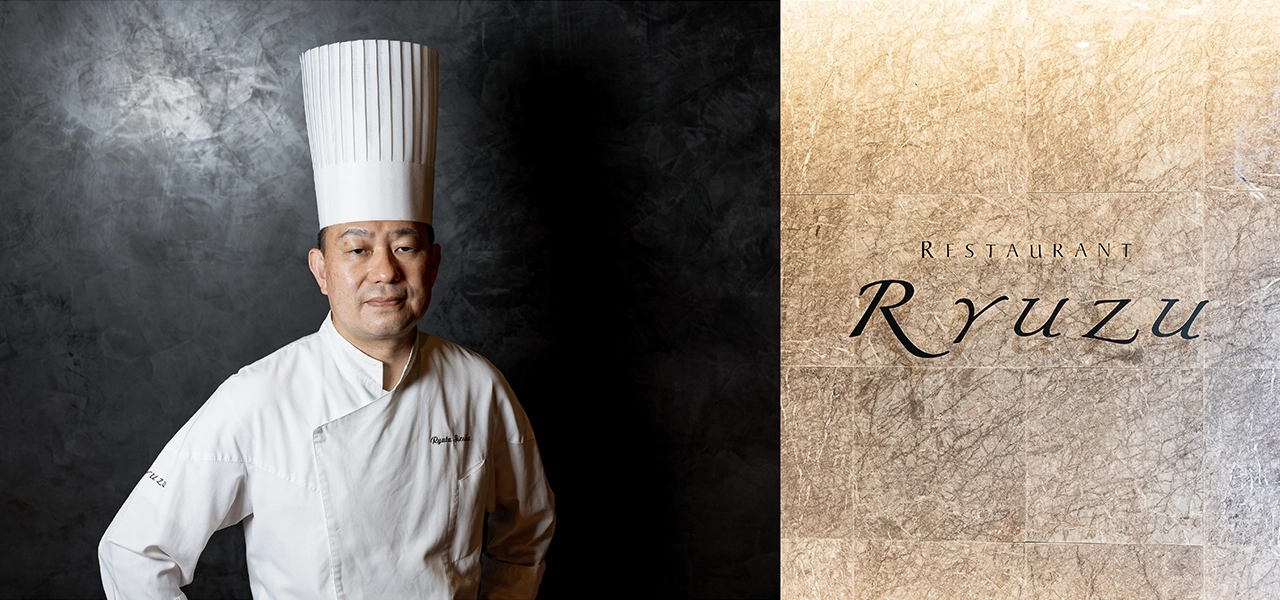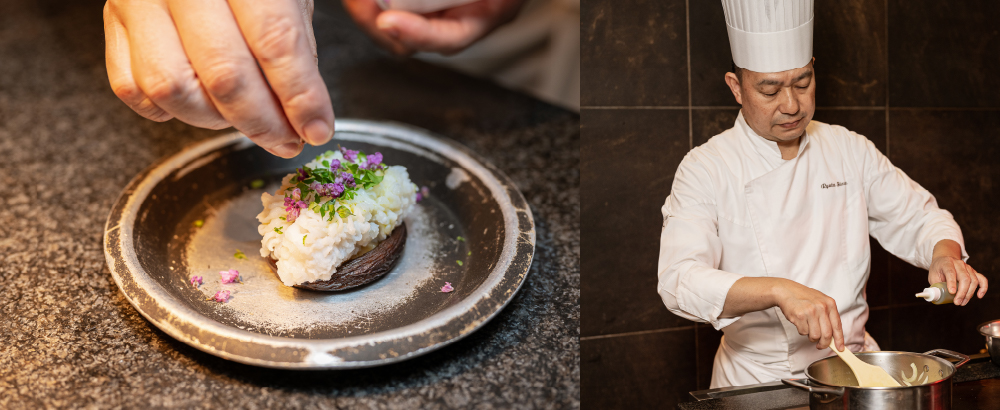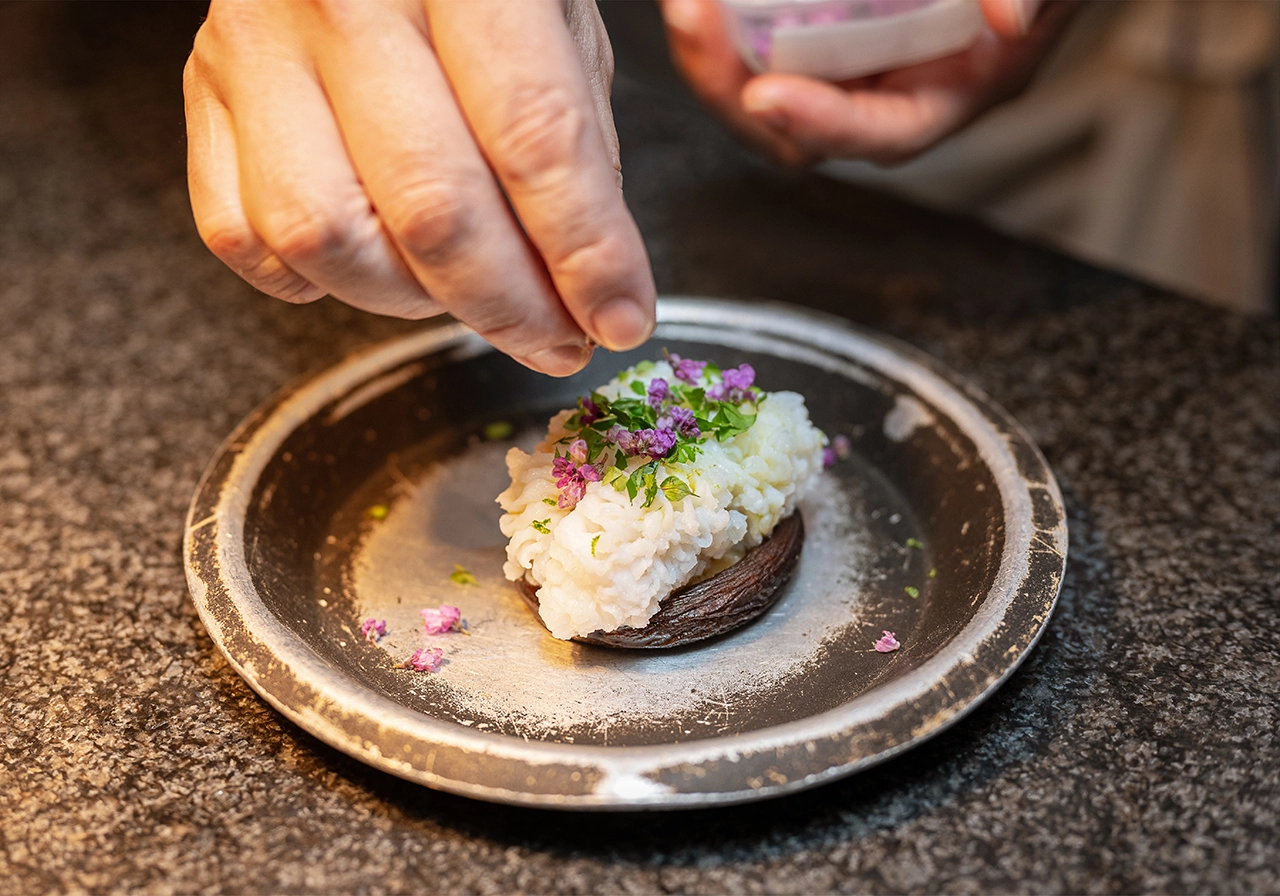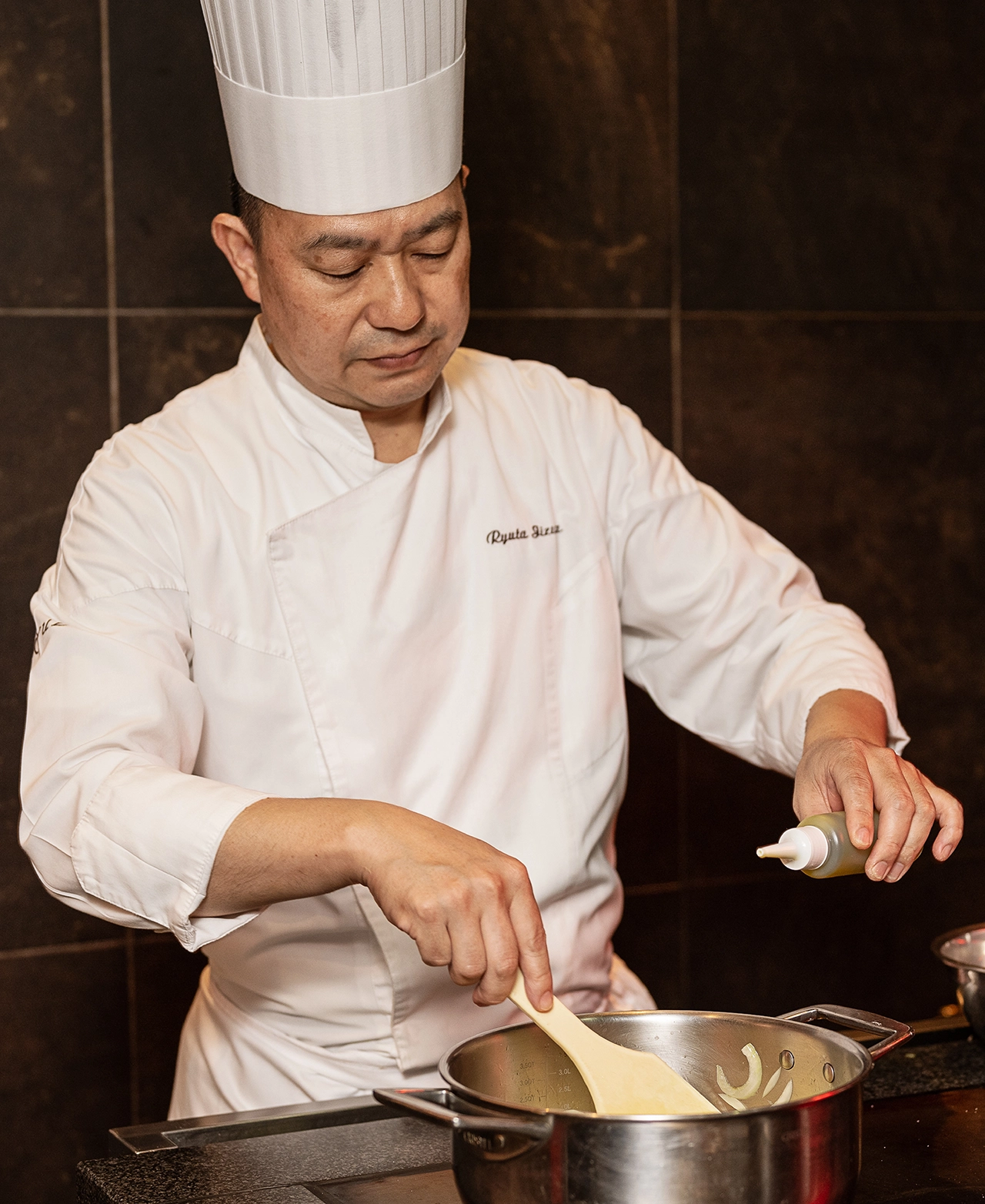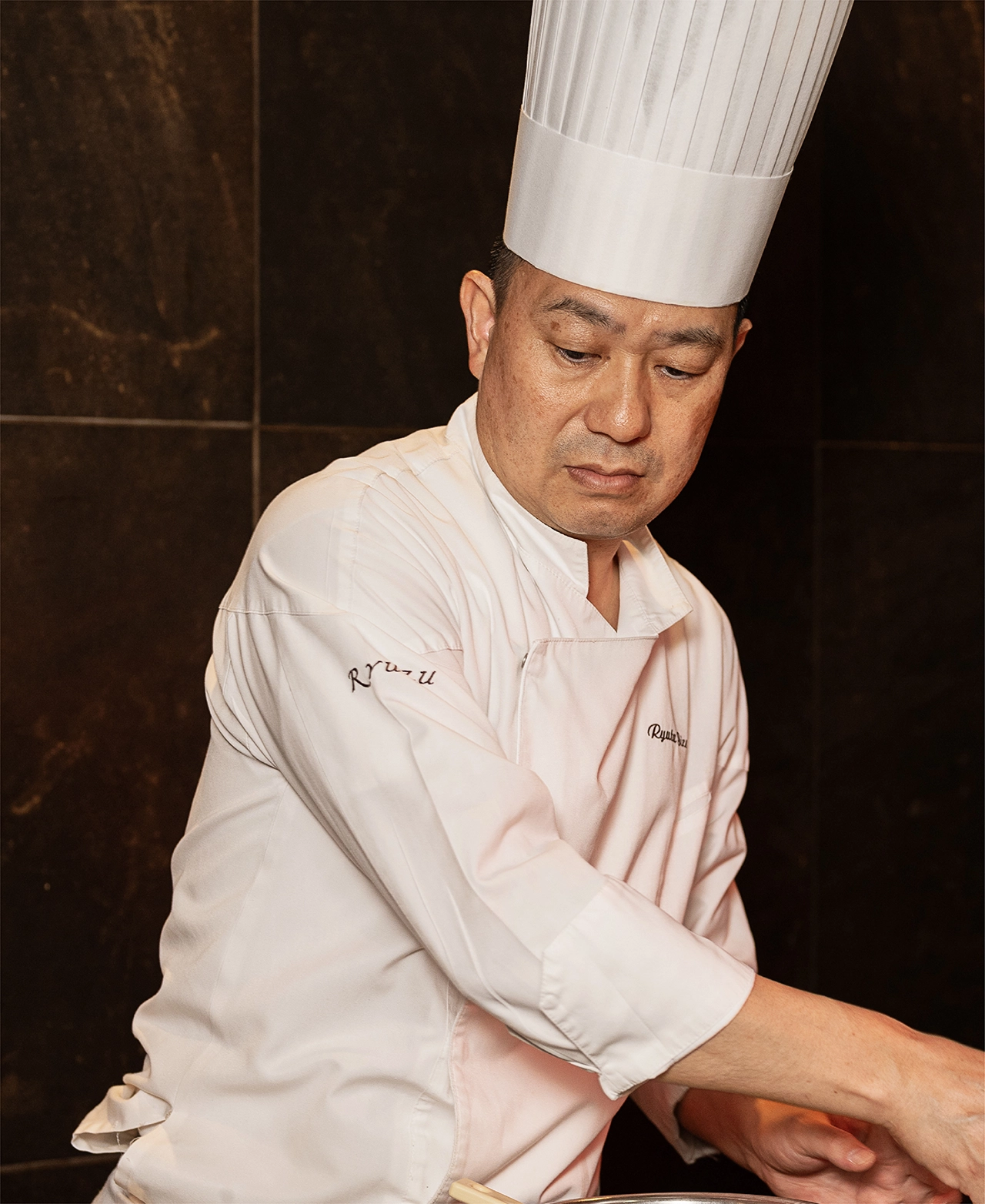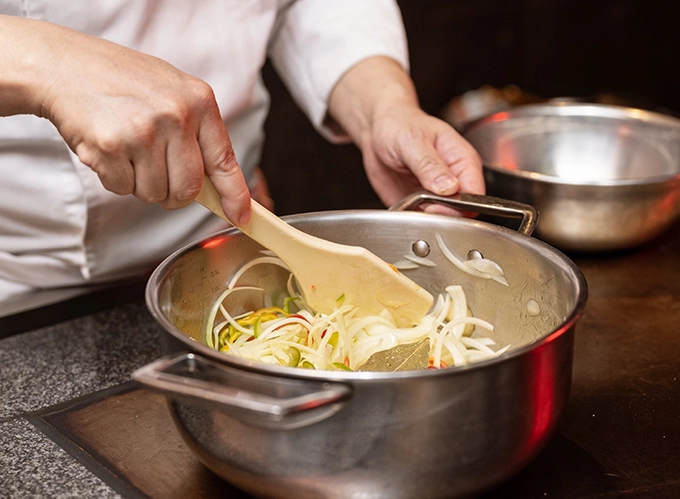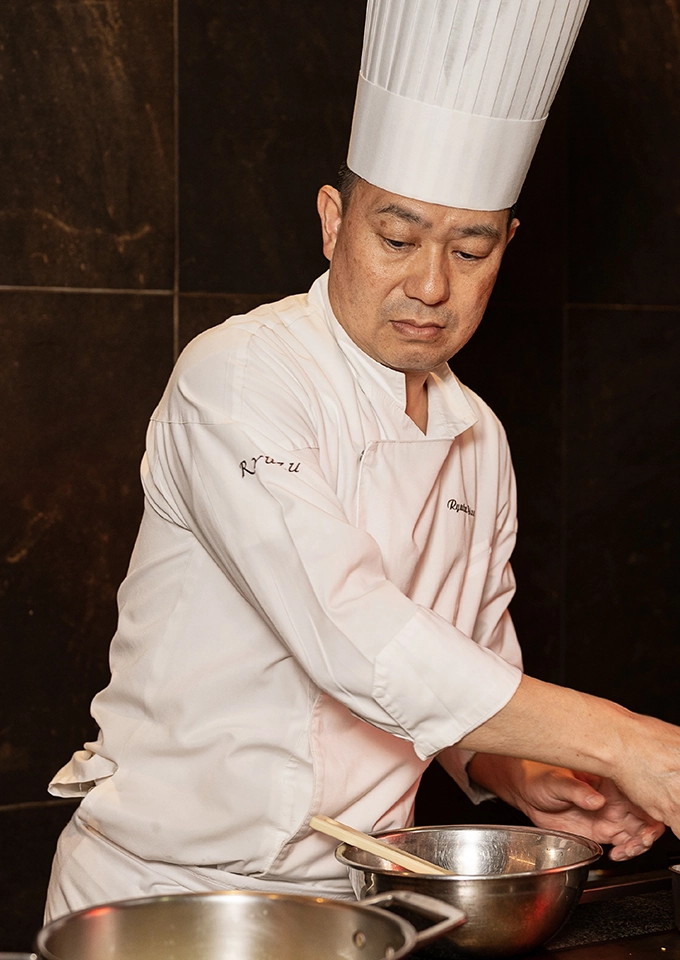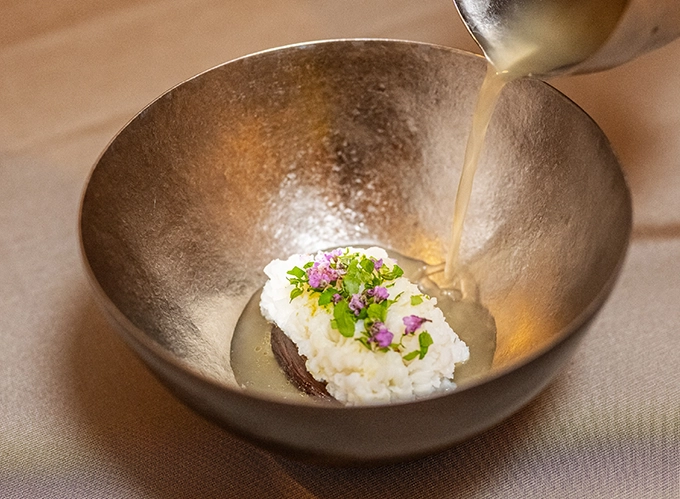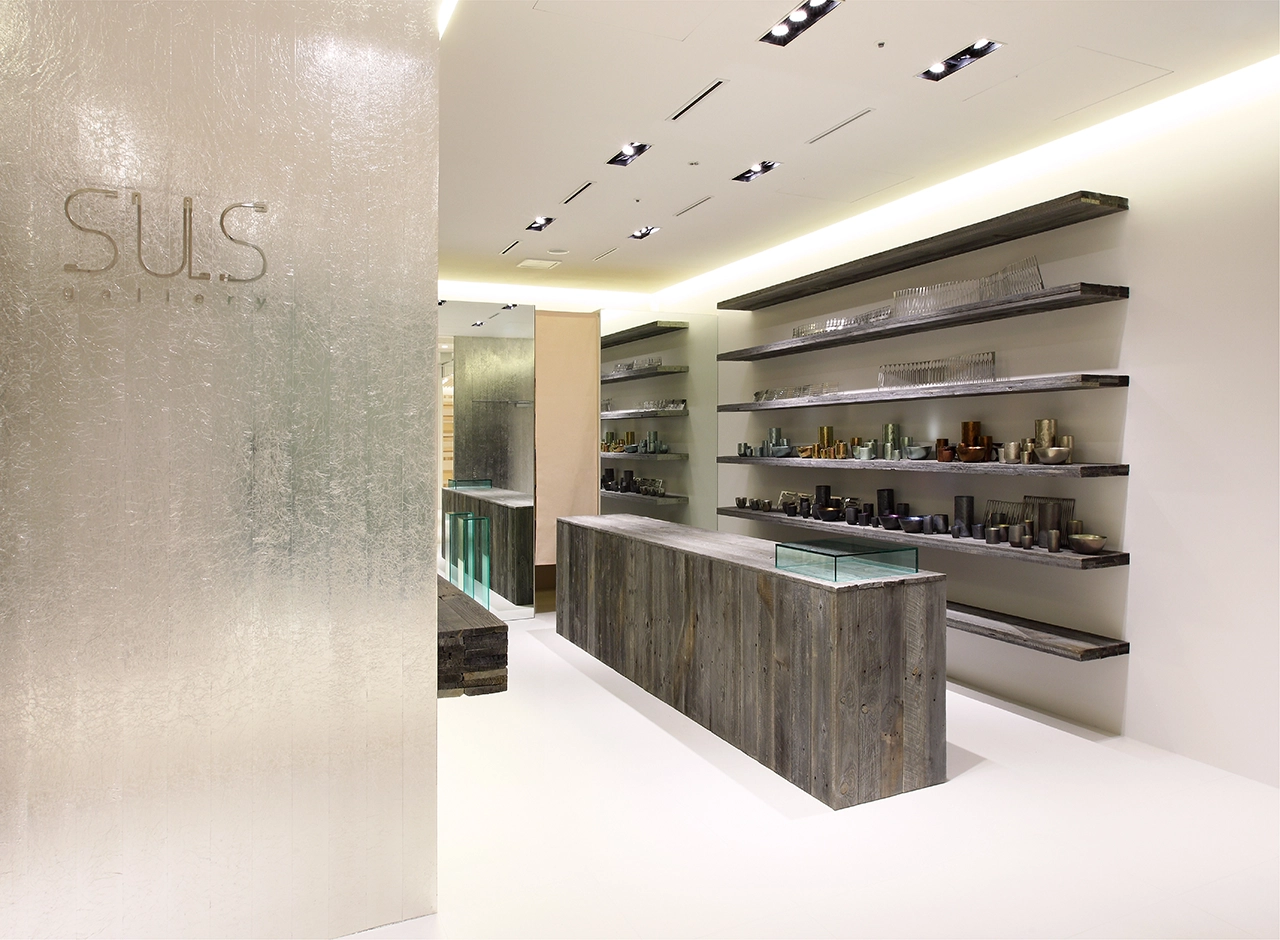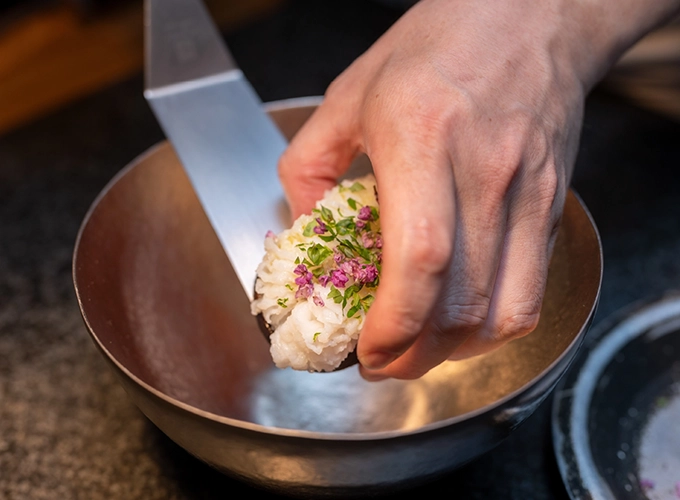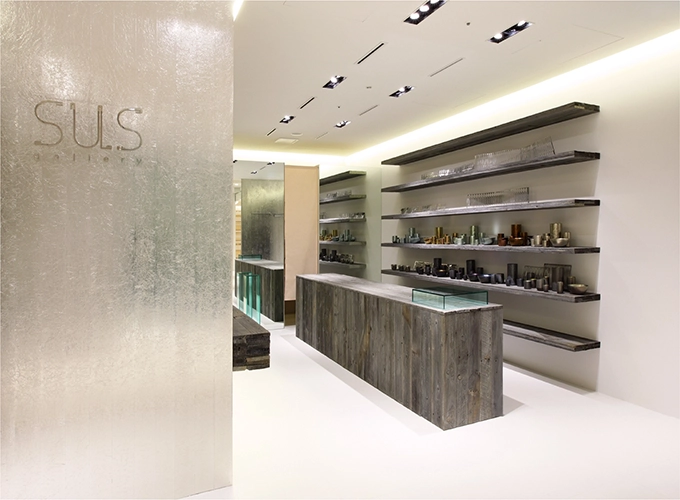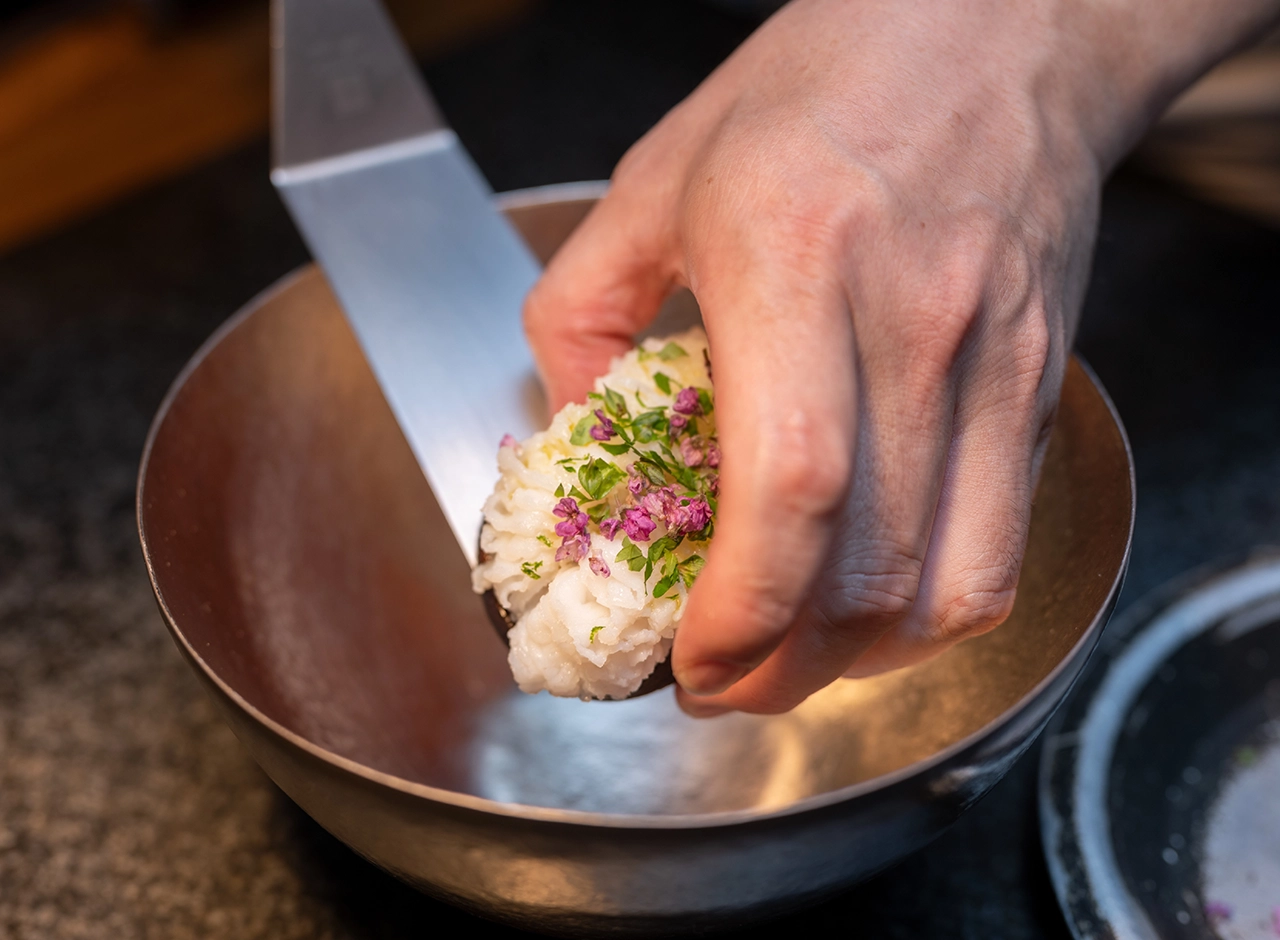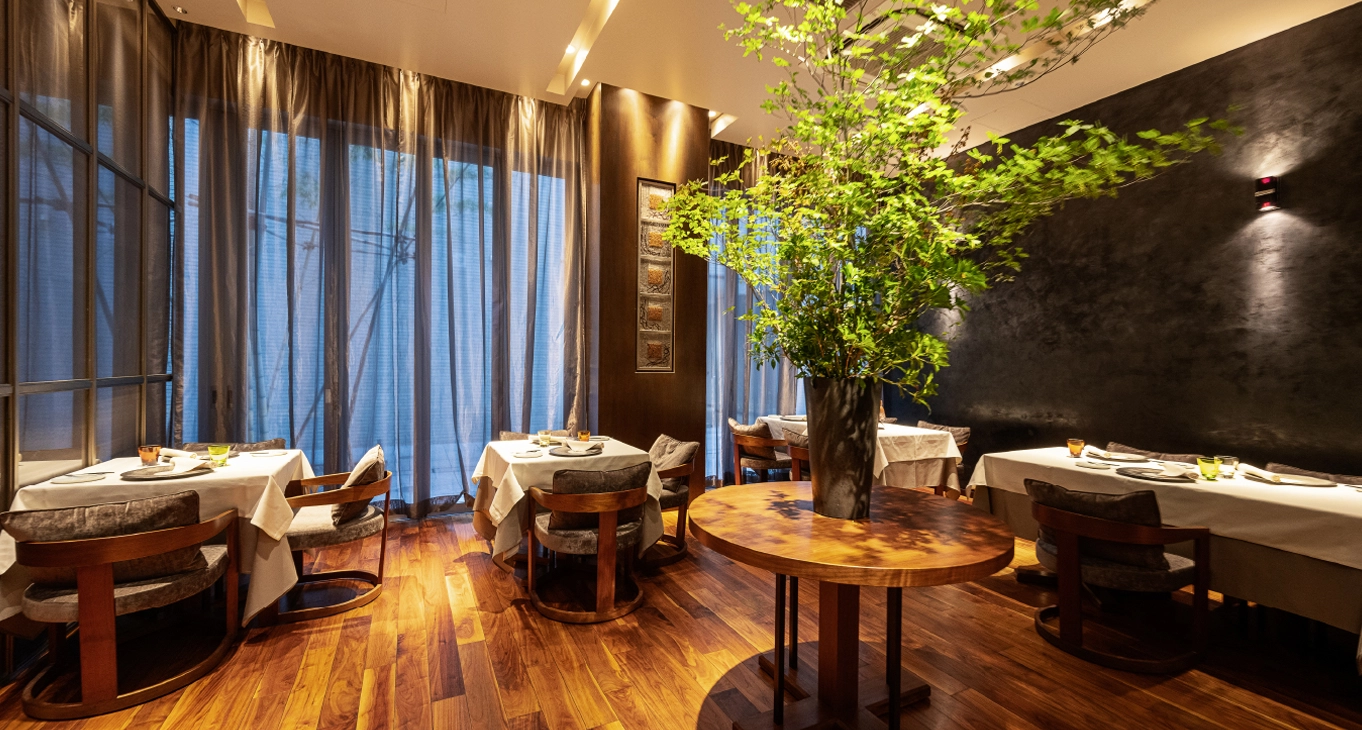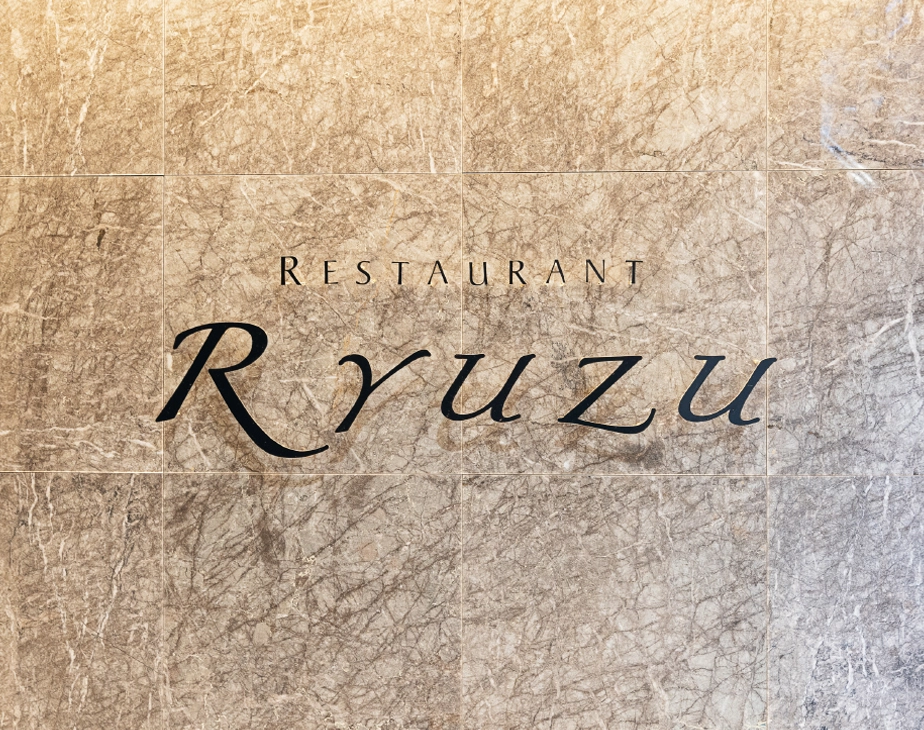Q1Could you tell us about your motivation for becoming a chef and the skills you've developed?
––––When did you first aspire to become a chef?
I always thought I wanted to become a chef, or rather, I just assumed I would become one since I was a child. However, in my generation, it was expected that everyone would go to junior high, high school, and then university. But I really hated studying, just couldn't stand it... During the summer break of my first year in high school, I visited my uncle, and while I was there, I met the owner of a famous local confectionery shop. During our conversation, he asked me, "Do you have anything you want to do in the future?" and advised me, "It's better to learn a trade." That's when it hit me—I had always wanted to become a chef. I think that was the moment I truly decided to pursue this path. In the summer of my first year in high school, I made up my mind to go to a culinary school. By the time I was in my second year, I had already started visiting vocational schools, and after graduating from high school, I went on to a culinary school in Osaka.
––––Was there a specific reason that led you to go to France?
After working at a hotel and before joining Robuchon, I always had doubts about whether the cuisine I was creating was truly French cuisine. I felt that I needed to go to France to find out. Around that time, there was an opportunity to join the opening of a restaurant in Japan under the supervision of Robuchon, so I applied and became part of the opening staff. Once I started working there, my doubts about whether what I was making was authentic French cuisine disappeared. Since the dishes were created by a three-star chef from France, I was truly satisfied. The main restaurant was in Paris, but we worked with a strong sense of purpose, determined to make the Tokyo location even better. As my peers started heading to France, one after another, I realized it was about time for me to go as well.
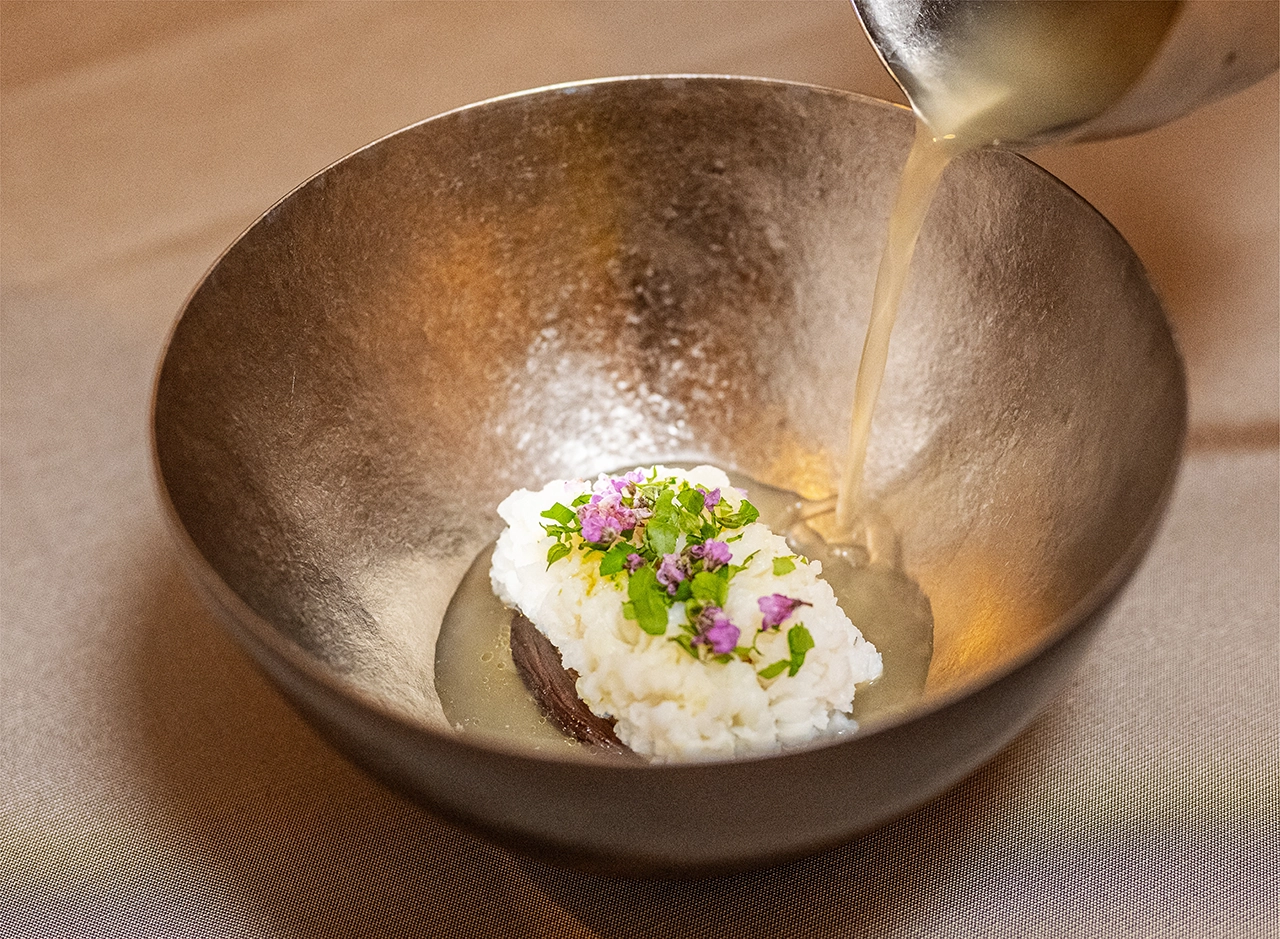 ––––You learned a lot in Japan as well, but were there any particular skills you learned in France?
––––You learned a lot in Japan as well, but were there any particular skills you learned in France?
To be honest, I didn't learn that many new techniques in France. I had already refined a lot of my skills in Japan, and in some ways, Japanese ways is more meticulous. However, true French cuisine can only be found in France, and it's not just about the restaurants—it's deeply connected to the lifestyle, culture, and background of the country. I felt like I learned from experiencing the local cuisine, breathing the air, and seeing the vineyards in the countryside. I went to France not so much to learn specific skills or techniques, but to enjoy and experience France itself. Of course, I worked hard at my job, but on my days off, I made it a point to visit different regions, drink good wine, and find inspiration through those experiences.
––––You earned stars while working at Robuchon, and after becoming independent, you quickly earned stars with Ryuzu as well, didn't you?
Actually, after leaving Robuchon, I went to France and then returned to Robuchon. After that, I left again to work as a culinary school instructor before returning to Robuchon once more. At that time, I was appointed as the chef on the first floor of the Ebisu location when it was being renovated. However, less than a year later, the chef at the Roppongi location was transferred, so I became the chef at L'Atelier de Joël Robuchon in Roppongi for about five years before becoming independent. At L'Atelier, we earned two Michelin stars when the Michelin Guide launched in Japan. People said it was impossible to get two stars, but we did it. In fact, Robuchon himself wrote in his book that "the two stars at L'Atelier in Roppongi were truly a cause for celebration," and of course, we were thrilled as well. After I went independent and opened Ryuzu, we earned one star in the fall of our first year, and the following year, we were awarded two stars. We've maintained those stars ever since.

